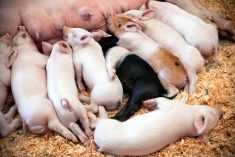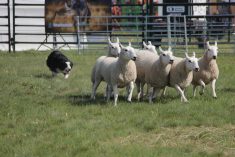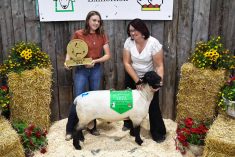RED DEER – Tattooing is an accepted identification method for market hogs, but problems can occur with ineligible or incorrectly placed marks.
Canadian pork plants want hogs tattooed so animals can be traced to owners for proper payment or to inform them about potential problems such as drug residues in meat.
Unreadable tattoos make it difficult for plant workers to tell who owns the hogs, said Charlie Jamieson of the Western Hog Exchange in Edmonton.
Tattoo information also helps build farm statistics for better management and stock selection.
Read Also

Dennis Laycraft to be inducted into the Canadian Agricultural Hall of Fame
Dennis Laycraft, a champion for the beef industry, will be inducted into the Canadian Agricultural Hall of Fame this fall.
“If you are going to make a management decision, you want to make a management decision on your own hogs, not the allocated ones,” he told a swine technology workshop held in Red Deer Oct. 27.
Jamieson made recommendations to ensure tattoos are properly done.
- Make sure the hammer used to apply the tattoos is free of hair and manure.
- Run pigs into a hallway and apply tattoos on the shoulder as they pass. Trying to connect the hammer correctly in a pen does not work as well. The tattoos need to go on the shoulder’s flat surface.
- Make sure numbers are in the right order.
- Make sure the pins carrying the ink go into the hide so a legible tattoo is carried into the skin. When the top layer of skin is removed at the plant, the tattoo could disappear. If there was not enough ink, inspectors could misread numbers such as three and eight.
- When the hog is killed and raised on its hind legs, the tattoo should read from left to right and right side up on the shoulder.
- Make sure the paperwork correlates with the tattoo because there could be multiple tattoos.
- Improved water-based ink is available. It needs to be cleaned off the tattoo hammer with water because it will dry hard. It also needs to be properly stored so it does not freeze.















